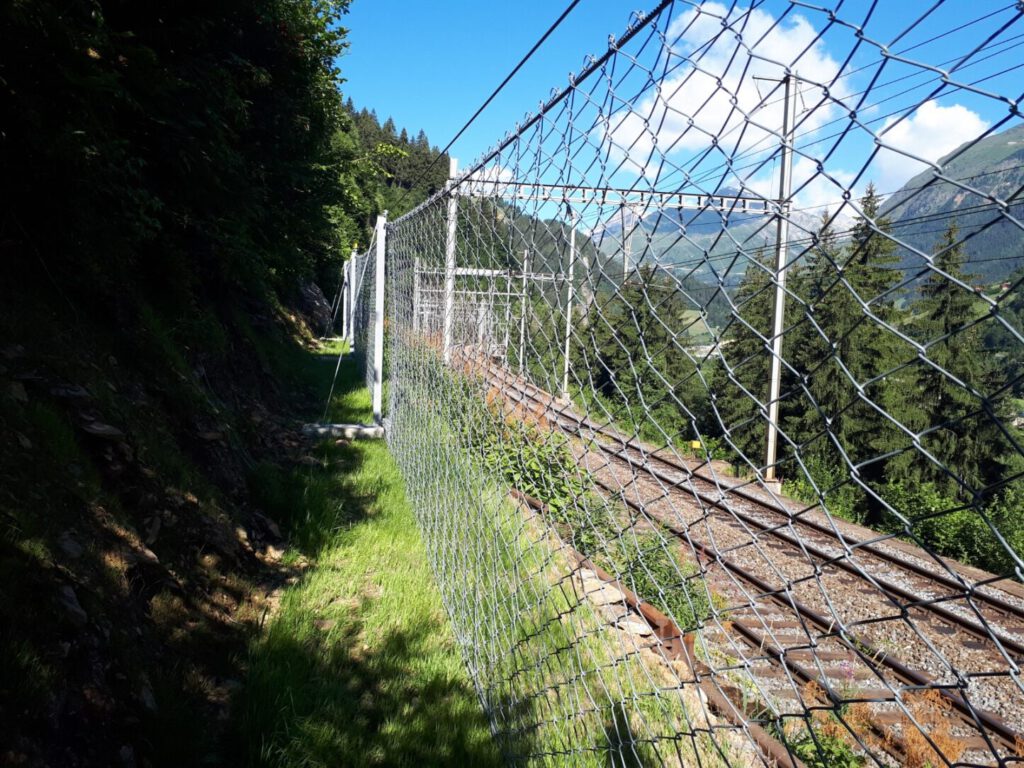Even small rockfall events can lead to costly downtime, damage, and safety concerns along transport corridors and infrastructure.

Low-energy rockfall barrier installed along a railway corridor — equipped for real-time impact detection and continuous condition monitoring.
In areas where protective fences, slopes, or barriers are exposed to frequent minor impacts, continuous real-time monitoring is vital.
The goal of this project was to design and deploy a low-energy impact monitoring system that could detect, record, and report small incidents—before they escalate into operational risks or structural failures.
The Challenge
Low-energy events are often underestimated. While they rarely cause major damage, their cumulative effect can weaken safety structures and lead to unplanned maintenance or service interruptions.
Traditional inspection methods can miss these subtle yet recurring impacts, as they only provide static “snapshot” data.
Railway operators, road authorities, and asset managers needed a low-maintenance, autonomous monitoring system that could:
-
Detect low-energy impacts in real time
-
Differentiate between false triggers and genuine events
-
Operate autonomously in remote or alpine terrain
-
Integrate seamlessly with existing control or maintenance systems

The Impact Sentinel system provides continuous rockfall monitoring in remote alpine locations
The Solution
The Impact Sentinel system was customized to monitor low-energy barriers and protective fences in real time.
Each wireless sensor measures impact acceleration, vibration, and tilt, continuously analyzing the structural behavior of the barrier.
Data is transmitted via redundant communication channels—such as GSM, radio, or fiber—to a local base station and then to the central SAM software interface, where engineers can visualize and evaluate events instantly.
Key Features
-
Real-time event detection and data transmission
-
Impact, tilt, and acceleration sensing
-
Configurable alert thresholds and event classification
-
Solar or Li-battery power for remote operation
-
Maintenance-free design with multi-year battery life
-
Optional video verification for event validation
Results
Within the first months of operation, the system successfully identified multiple small impact events, correlating them with freeze–thaw cycles and heavy rainfall periods.
This insight allowed maintenance teams to switch from scheduled inspections to data-driven predictive maintenance, focusing resources where stress or movement was actually detected.
By quantifying even minor impacts, operators gained a clearer understanding of barrier fatigue and site behavior over time—improving both safety assurance and cost efficiency.

Engineers and geotechnical specialists install the Impact Sentinel rockfall monitoring system along a railway corridor to enhance safety and real-time hazard detection.
Conclusion
Real-time monitoring of low-energy incidents bridges the gap between passive protection and proactive risk management.
With Impact Sentinel, operators can now detect, analyze, and respond to events as they happen—creating a continuous safety feedback loop for rail, road, and alpine infrastructure.
The result is a smarter, safer, and more efficient approach to managing everyday geological hazards.

